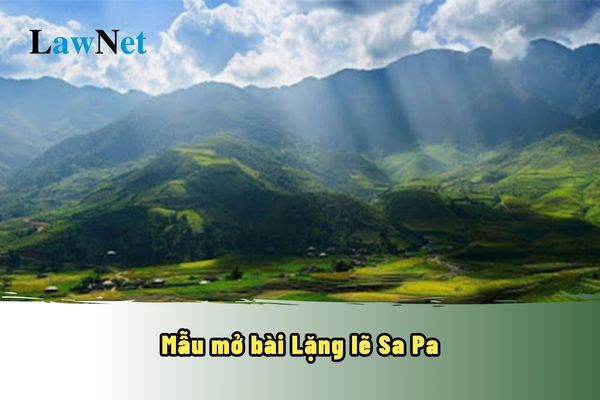What are the sample introductions for an essay on the work "Lặng lẽ Sa Pa"? What are the literary knowledge circuits in the Literature curricula in Vietnam?
What are the sample introductions for an essay on the work "Lặng lẽ Sa Pa"?
9th-grade students can refer to the following sample introductions for an essay on the work "Lặng lẽ Sa Pa":
|
Sample introductions for an essay on the work "Lặng lẽ Sa Pa" To help you have an impressive introduction, I suggest several great ways to start your essay, which you can refer to and adjust to suit your own ideas: |
*Note: The information is for reference purposes only./.

What are the sample introductions for an essay on the work "Lặng lẽ Sa Pa"? (Image from the Internet)
What are the literary knowledge circuits in the Literature curricula in Vietnam?
Under Section 5 of the general education program for Literature issued with Circular 32/2018/TT-BGDDT, the literary knowledge circuits in the Literature curricula are defined as follows:
* Literature
- The literary knowledge circuits
+ Literary theory: some practical issues in literary theory closely related to understanding literary texts.
+ Literary genres: stories, poetry, plays, memoirs, and some representative genres.
+ Elements of literary texts: story, plot, characters, space, time, narrator, point of view, rhyme, rhythm,...
+ Literary history: some major authors and brief histories of Vietnamese literature summarized at the end of secondary school and high school.
- Distribution of literary knowledge circuits at each educational level
+ Primary level: some basic understandings of stories and poetry, fictional and non-fictional texts; characters in literary texts, plots, time, space, vocabulary, poetic rhyme and rhythm, imagery, and character dialogues.
+ Lower secondary level: knowledge about genres (folk tales, short stories, lyrical and narrative poetry; memoir lyrics and narrative memoirs; Nôm narrative poems, fixed-form poetry, and free poetry, tragedy, and comedy);
Expressive value, cognitive value of literary works; some stylistic elements and artistic methods of each literary genre (narrator, first-person narrator, third-person narrator, character, point of view, shift in narrator and viewpoint, conflict, space and time, narrator’s voice and character’s voice, lyrical emotional sequence, vocabulary, imagery, rhyme, rhythm, poetic rules, structure);
A brief summary of literary history by the end of grade 9.
+ Upper secondary level: Advanced understanding of some lesser-known genres, sub-genres requiring higher reading skills (mythology, epics, chèo or tuồng, contemporary story and poetry; modern and post-modern novels);
Some practical history of literature and literary theory knowledge relevant to reading and writing literary texts (story, omniscient narrator, limited narrator, narrator shifts, viewpoint organization, storytelling technique, poetic concept, characteristics of literary figures; literary style;
Knowledge about literary history and some major authors); some study topics focusing on knowledge of periods, movements, and literary composition styles.
What are the regulations on reward and discipline for lower secondary school students in Vietnam?
Under Article 38 of the Charter of Lower Secondary Schools, Upper Secondary Schools, and Multi-level Schools issued with Circular 32/2020/TT-BGDDT, reward and discipline for lower secondary school students are regulated as follows:
- Teachers, secondary schools and education authorities shall reward students with learning and training achievements in the following ways:
+ Commend them in front of the class or the whole school.
+ Grant them titles for students according to regulations.
+ Grant certificates and certificates of merit to students with outstanding achievements or exceptional improvement in learning or emulation movements and competition winners according to regulations and with permission from the Ministry of Education and Training.
+ Other ways to reward.
- Students making a mistake during the learning and training process shall be corrected or disciplined in the following ways:
+ Give the student a reminder, directly support them in correcting their mistake.
+ Reprimand the student, inform the student’s parent(s) to have the parent(s) cooperate in supporting the student in correcting their mistake.
+ Suspend the student’s study at school for a definite period and take other correcting measures according to regulations from the Ministry of Education and Training.

